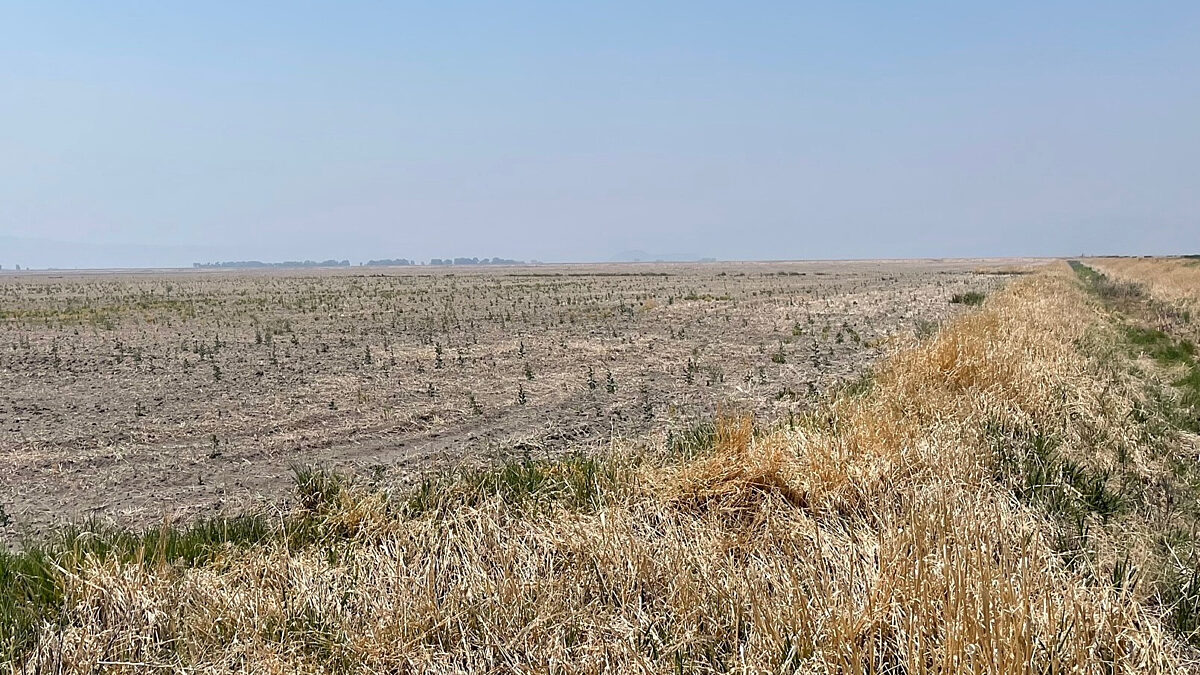Addressing the Impact of Prolonged Drought on Farm Program Yields
TOPICS
Farm Bill
photo credit: Jason Flowers, Used with Permission
John Newton, Ph.D.
Vice President of Public Policy and Economic Analysis
As of April 17, 2018, the United States Drought Monitor indicated that approximately 43 percent of the continental U.S. was in drought status. Additionally, approximately 1.7 percent of the U.S. is currently classified as D4 exceptional drought. The percentage of land area in D4 status is the highest percentage since December 2016, when 2 percent of the U.S. was experiencing a D4 drought. The intensity of the current drought has contributed to major wildfire outbreaks on farms and ranches in some of the affected areas and resulted in poorer conditions of cropland, pasture land and rangeland, e.g. U.S. Winter Wheat Condition the Worst in 16 Years.
For some portions of the Southwest, the length of the current drought is greater than 100 consecutive days without measurable rainfall and in D3 (extreme drought) or D4 (exceptional drought) status. An interesting question is, how the current drought compares to droughts experienced over the last decade? Data from the United States Drought Monitor on the number of consecutive weeks in category D4 reveals that over the last decade many portions of the U.S. have had extended periods of drought lasting from 20 consecutive weeks to as many as 160 consecutive weeks, Figure 1.

The drought length, measured in the number of consecutive weeks in D4 status, was the highest in portions of California, Colorado, Oklahoma and Texas. Drought in parts of these states exceeded 80 consecutive weeks. For example, Kern County, California, was categorized as D4 on Jan. 28, 2014, and finally came out of the D4 drought category 156 weeks later, on Jan. 17, 2017.
In addition, large portions of the Southwest have experienced D4 droughts lasting for 20 or more weeks over the last decade. The severity and length of the droughts impacted a variety of commodities. For example, the drought contributed to a notable slowdown in California milk production and resulted in large declines in crop yields across parts of the Southwest.
Impact on Farm Programs
The impact on crop yields is noteworthy as it pertains to both the 2014 and 2018 farm bills. The 2014 farm bill provided a one-time opportunity for growers to update their program payment yields on a commodity-by-commodity basis. The updated yields were based on 90 percent of the average crop yield for the 2008 to 2012 period and established a floor of 75 percent of the average yield. These updated yields were used to administer the Price Loss Coverage program.
However, a number of issues emerged when reviewing how the 2014 farm bill’s yield updating provisions impacted growers. First, many counties experienced droughts lasting longer than 20 consecutive weeks during the yield survey period established in the 2014 farm bill. For growers impacted by that drought, the program yields and thus the benefits were lower during the current commodity price decline. Second, while cotton was not a covered commodity in the 2014 farm bill, the Bipartisan Budget Act of 2018 established seed cotton as a covered commodity, yet those growers never had an opportunity to update their program yields.
To potentially address these issues, the recently released House farm bill provides for another one-time opportunity to update program yields if the county experienced 20 or more consecutive weeks of drought from 2008 to 2012. This will allow growers impacted by the drought, as well as seed cotton producers, a chance to update their program yields to an amount equal to 90 percent of the average of 2013 to 2017 crop yields on a commodity-by-commodity basis.
From 2008 to 2012 there were 415 counties across the U.S. that had a drought for 20 or more consecutive weeks, Figure 2. Many of these counties were in southwest Texas and extended up into western Oklahoma and Nebraska. Of these 415 counties in which growers would have a one-time opportunity to update program yields under the House farm bill, more than half of the counties had at least 30 weeks of consecutive drought. The maximum length of the drought was observed in portions of Texas where Brewster, Jeff Davis and Presidio counties had 57 consecutive weeks of drought.

Summary
The U.S. is currently experiencing exceptional drought conditions in portions of the Southwest. In many areas, the length of the drought exceeds 15 consecutive weeks in the D4 (exceptional) category. Historically, similar drought conditions exceeding 40 consecutive weeks have been observed in portions of California and the Southwest. The duration of such droughts has immediate and longer-term impacts. One of the long-run effects is the impact on farm program benefits and program yields. The 2018 farm bill passed by the House Committee on Agriculture seeks to address the impact of severe droughts by allowing growers a one-time opportunity to update program yields if they farmed in a county that reached D4 drought status for 20 or more consecutive weeks from 2008 to 2012.
Top Issues
VIEW ALL